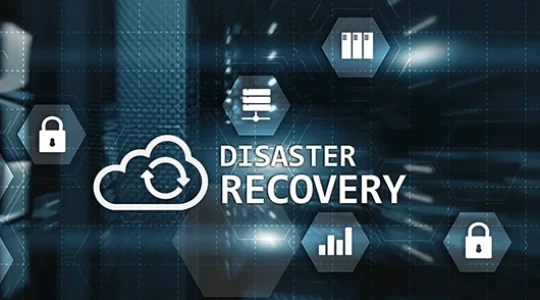Cloud migration is one of the main bets of the modern market, as it allows businesses to stand out in scalability, cost reduction, and greater data security. However, there are several challenges associated with this process that must be overcome before the technology is implemented.
If your company does not know them or dismisses the idea that moving to the cloud is essential to your business, you are falling behind! In other words, you are losing competitiveness.
To give you an idea, a survey launched by Gartner identified that more than 50% of IT sector investment will be shifted from the traditional field to the Public Cloud by the end of this year.
In practice, this represents a ten-point increase from 41% in 2022, as well as a global market value of US$ 723.4 billion by 2025. Additionally, the estimate is that by 2027, 90% of companies will adopt this tool.
Therefore, migrating to the cloud is also ensuring the longevity of organizations. It is not just about innovation but about market survival. Do you know how to do it? Learn in the content below.
What is cloud migration?
In general terms, migrating to the cloud means moving applications, IT processes, data, information, and other digital resources from companies, which were previously located in physical structures (such as local hardware), to a cloud computing environment.
Since this is a complex process, especially when it involves large infrastructures, it is necessary to adopt specific strategies for its implementation.
In 2011, Gartner outlined the first 5Rs of cloud migration, now reaching 7: Rehost (Rehost); Replatform (Replatform); Repurchase; Refactoring/Re-architecting (Refactor/Re-architect); Retire (Retire); Retain (Retain) and Relocate (Relocate).
These are possible models for an efficient and conscious cloud migration.
| Rehost | Known as "lift-and-shift," it involves moving applications to the cloud without major changes. |
| Replatform | Minimal adjustments to optimize the application in the new environment. |
| Repurchase | Replace the current application with a cloud-based solution. |
| Refactoring/Re-architecting | Rebuild applications to fully leverage cloud resources. |
| Retire | Deactivate obsolete systems to reduce costs and complexity. |
| Retain | Keep certain systems in the current environment when migration is not advantageous. |
| Relocate | Transfer applications to the cloud without modifying the code. |
Each strategy has its particularities and should be chosen based on the company's goals and infrastructure.
5 Challenges of Cloud Migration and How to Overcome Them
Even with all the benefits of cloud migration, such as scalability, cost reduction, and greater agility, this process can come with obstacles that may compromise its effectiveness.
Understanding these challenges and learning how to overcome them is crucial for a successful transition.
1) Performing cloud migration in a disorganized way without planning
Without a solid plan, migration can result in compatibility issues, unexpected costs, and service interruptions.
Companies attempting to migrate without a clear strategy often face difficulties in adaptation and waste time correcting avoidable mistakes.
|
How to overcome this cloud migration challenge? Defining a structured migration plan is the first step. This includes mapping all applications and data involved, setting priorities, defining success metrics, and ensuring that a team is responsible for monitoring the cloud, identifying which resources are truly needed and for how long. A specialized partner, such as Prime DB, can help create an efficient roadmap, minimizing risks and ensuring that each step is executed correctly. |
2) Ensuring data protection during the migration process
Information security is one of the biggest concerns when transferring sensitive data to the cloud.
Leaks or unauthorized access can compromise business integrity and cause irreparable damage.
Since the cloud operates in a shared environment, where different companies use the same physical and virtual resources, exposure to risks increases. Distributed denial-of-service (DDoS) attacks, malware infections, and compliance violations are common threats that can compromise data integrity and business continuity.
Therefore, before implementing a cloud migration process, it is essential to develop cybersecurity strategies to overcome this challenge.
|
How to overcome this cloud migration challenge? The best way to mitigate these risks is to implement extra layers of protection. With end-to-end encryption, for example, you ensure that data remains unreadable even if intercepted. There is also multi-factor authentication, which makes unauthorized access more difficult, while regular backups prevent irreversible data loss. Additionally, working with a provider that follows strict compliance standards reduces the chances of exposure to security flaws. |
3) Complex physical structures
Companies operating with legacy infrastructures face additional challenges when migrating to the cloud.
Many systems were developed during a time when cloud computing was not a viable option, meaning their architectures were not designed for this environment. Critical applications may rely on specific physical servers, local databases, or integrations that have no direct equivalents in the cloud.
There are also cases where software essential to business operations has been customized over the years, making its adaptation even more complex.
Migration in these scenarios may require not only technical adjustments but a complete system restructuring to ensure proper operation in the new environment.
|
How to overcome this cloud migration challenge? Before making any changes, it is essential to return to tip #1 and perform a detailed mapping of the existing infrastructure. This diagnosis will help define which applications can be migrated directly, which will need adjustments, and which should be replaced. Hybrid models are an alternative for companies that cannot completely abandon their physical structures right away. With this approach, it is possible to maintain some operations on local servers while gradually transferring new services to the cloud. The use of containers and virtual machines also facilitates the adaptation of legacy applications, allowing them to run in a more flexible environment without the need for a complete rebuild. |
4) Lack of technical knowledge from those involved in the project
Cloud migration requires a level of technical knowledge that not all teams have.
The lack of familiarity with concepts like cloud architecture, scalable resource management, and digital security can lead to mistakes that compromise system performance and increase operational costs.
One of the most common problems is the improper allocation of resources. Without a deep understanding of how pay-as-you-go billing works in the cloud, some companies end up purchasing more capacity than needed or configuring their systems inefficiently, wasting budget.
The absence of good security practices can open gaps for vulnerabilities and unauthorized access.
|
How to overcome this cloud migration challenge? Training is an excellent way to promote this result, through specific training, certifications in cloud technologies, and workshops that help professionals understand the best industry practices. Another effective solution is to rely on specialized consultancies, which can act from the planning phase to the execution of migration. These specialists help define the best strategy for each business type, minimizing risks and optimizing system performance in the cloud. Finally, adopting automation tools can facilitate the management of new environments, reducing dependence on highly technical knowledge in day-to-day operations. Cloud management platforms offer intuitive dashboards and features that simplify administration, making the process more accessible even for teams with little prior experience. |
5) Often unknown costs
Migrating to the cloud is a strategic decision that promises to reduce operational costs, but without proper planning, expenses can spiral out of control.
Many companies face unexpected charges, either due to excessive resource usage, data transfers between servers, or the need for specialized technical support.
The pay-as-you-go model, typical of the cloud, is advantageous because it allows services to scale according to demand. However, without efficient management, a company may end up paying for underutilized resources or facing high costs during peak periods.
The lack of budget predictability can also make financial control difficult, especially for businesses migrating large volumes of data or critical applications.
|
How to overcome this cloud migration challenge? To overcome this cloud migration challenge, start by understanding the pricing structure of the chosen provider, as it directly influences costs. Use monitoring tools to track consumption in real-time and make quick adjustments. Also, adopt strategies like reserved instances to get discounts on long-term contracts. Finally, invest in an optimized architecture to allocate resources efficiently and consider the support of experts to maximize the benefits of the cloud without exceeding the budget. |
How to make your cloud migration now?
Is your company ready to take this new step towards the future? Prime DB Solutions can help!
With expertise in migration solutions with Oracle and Microsoft quality certifications, our team can manage the entire process - from strategic planning to implementation - ensuring that your business takes full advantage of everything the cloud has to offer.
Using advanced technologies like Oracle Autonomous Database, Oracle Analytics Cloud, and Fortinet Firewalls, PrimeDB is prepared to help your company modernize its processes and increase its competitiveness.
Interested in learning more about our cloud computing services? Contact our team!


